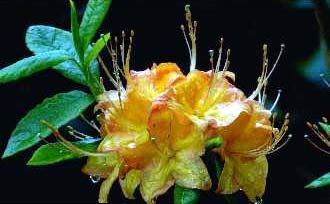How often have you wanted to prolong the beauty of special flowers or grasses in your garden? It is a lot easier to do than you might think.
Grasses provide a sense of equilibrium between beds of showy plants and in bouquets of flowers. They often provide just the right filler for an otherwise glaring gap in the garden. It is not at all difficult to collect and preserve grasses, and they can be very attractive.
Grasses – More than Green
The special quality most grasses possess is their quiet, unassuming beauty and delicate appearance. Sometimes, however, you must really look to appreciate their unobtrusive presence and effect. Still, they are worth every effort you are able to dedicate to their cultivation.
Imagine the Possibilities
Not everyone who grows grasses does so with the same purpose in mind. Some are interested in planting as many types of grass as possible for the botanical experience. Others collect grasses to provide winter flower arrangements with delicate touches. Still others use dried grasses to add a personal touch to greeting cards. And some people dry grasses to be used in arrangements of grass alone.
The Basics of Grass Collecting
It cannot be said too often that wild plants - and that includes grasses - must never be picked from public lands; some may be endangered species and as such are protected by law. If you are going to dry grasses, grow them yourself in a garden or collect them from a willing friend. Even then, never collect any more grasses than you can process soon at home, because many grasses lose their beauty altogether if they are left lying around for any length of time. If your aim is to start a systematic collection of grasses, you should lift the plants carefully, with their roots intact, and store them that way.
Pressing Grass
You can dry grasses by pressing them. You can press them at home, or do it right where you have picked the grasses if you come prepared with a plant press. The simplest type of plant press consists of 2 pieces of cardboard, a few sheets of blotting paper, and some heavy object such as a thick book for a weight; the grasses are laid flat in layers alternating with the blotting paper, the 2 pieces of cardboard secure them on top and bottom, and the weight goes on top to keep the layers flat. If you have to wait to get home before you can press your grasses, be sure to take along a bucket of water to keep them fresh until you get them home.
Hang Them Upside Down
Before drying any grasses, make sure that they are mature, fully developed, and stable. One of the simplest and oldest methods of drying grasses is to hang them upside down. This method can be used for most species of non-woody grasses so that they will remain upright after drying. Any leaves that will not be satisfactorily preserved during the drying process should be stripped away. Tie several stalks of grass together in small bunches and dry them in a well-ventilated location. Good air circulation is very important to the successful drying of grasses (or any other plants). The faster they dry, the fresher their colors will be.
Drying Grasses Standing Up
Plants with woody stalks, such as pampas grass, are better dried standing upright in a large container. This method has the advantage of preserving the gentle swaying quality of the grasses. If they were hung upside down to dry, the stalks would become stiff and lose their graceful arching.
Designing an Arrangement
To create a balanced impression with a floral centerpiece, make the height of the arrangement 2 to 3 times the diameter of the bowl. Roots, branches, and tree fungi can be included with grasses and flowers to provide additional design elements. Tree bark makes a good foundation for a centerpiece arrangement.
Grasses and Leaves
Leaves, too, can be used to create attractive dried arrangements. Especially in their autumn colors, leaves can be effectively combined with grasses to bring a warm feeling of fall to a living room or dining room.
To preserve leaves, place them between 2 pieces of waxed paper and sandwich them between 2 sheets of paper toweling; go over the leaves several times with a hot iron. The heat of the iron will cause a fine coating of protective wax to be transferred from the waxed paper to both sides of the leaves.
Another way to preserve leaves is to place them in a solution of glycerin and water; this helps them stay longer on the branch and keeps them from shrinking. Be sure the water is very hot, so the solution will penetrate the leaves, but do not heat the glycerin. The leaves will turn much darker as a result of glycerinating,
however.
Some Helpful Hints for Drying Grasses
• If you want to create an arrangement with dried grasses but the grasses do not have the desired shape, hold them over steaming hot water and carefully bend them into the shape you want.
• If the grasses are still a little dusty before they are to be used in the arrangement, you can rinse them off with water if you do it quickly. Of course, they will then have to be allowed to dry off again.
• Grasses that have lost their vibrancy can be brought back to life if they are sprayed with a clear lacquer.
• Grasses can be dyed after they have been dried. Watercolors and fabric dyes can be used for the purpose.
TIPS
Grasses with showy flower spikes such as pampas grass (Cortaderia) and maiden grass (Miscanthus) are among the most beautiful of ornamental grasses and excellent for drying. Grasses with interesting seed heads, such as quaking grass (Briza maxima) and Job's tears (Coix lacryma-jobi), are also suitable.


